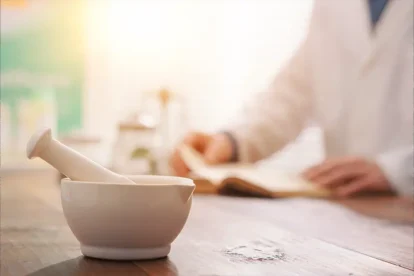How the 12 Steps Fit into Residential Addiction Treatment

Since the introduction of Alcoholics Anonymous in 1935, we have seen an explosion of 12-step groups around the world. But are the 12 steps compatible with the medical model of addiction that focuses on pharmacology and therapies designed to retrain the brain to heal from the damage of substance abuse? A growing body of research is providing evidence of the value of the 12 steps, giving new hope to those struggling with addiction.
Akron, Ohio might seem an unlikely birthplace for an international movement. And, yet, Akron was where Bill W. and Dr. Bob S. met to share their experiences with addiction and recovery, planting the seeds for the very first 12-step group. The year was 1935 and both men were alcoholics, but Bill had gotten sober with the help of a spiritual fellowship and an old-time friend named Ebby T. He believed that “alcoholism was a malady of mind, emotions, and body” and that working with other alcoholics was a critical part of his own sobriety. Dr. Bob was, at the time, still an active alcoholic, but soon got sober by drawing on Bill’s wisdom to craft his own recovery program.
Eager to share this new recovery method with others, the men began working with other alcoholics in groups, helping over 100 people achieve sobriety in the first 4 years. In 1939, they distilled their teachings in the form of a textbook called Alcoholics Anonymous, which centered around one core philosophy: the Twelve Steps of recovery. Since that time, Alcoholics Anonymous has grown exponentially; there are now over 100,000 AA groups and nearly 2 million members around the world. The 12 steps have also been adapted as a recovery model for all kinds of other addictions, both substance- and process-related, serving as the foundation for everything from Narcotics Anonymous to Overeaters Anonymous. In the United States, you can now find a 12-step group virtually anywhere at any time, for any addiction you may have.
In the past two decades, we have also seen the emergence of something else: residential treatment programs working from a medical model of addiction. These programs use the latest in medical research to craft individualized treatment experiences designed to create sobriety with an understanding of addiction as a disease of the brain. To some, such programs seem to replace or even be antithetical to the 12-step model of recovery. After all, spiritual fellowship and modern medicine may appear to have little in common. But in fact, the 12 steps and medically-driven residential treatment programs work hand-in-hand to provide the best long-term outcomes.
Toward a Medical Model of Addiction
Historically, addiction has been considered a failure of character, personal weakness, and individual choice. This flawed understanding of addictive behaviors and addicted people has brought with it deep stigmatization and ineffective treatment attempts that have augmented the suffering of those struggling with addiction and their families. It wasn’t until 2015 that the American Society of Addiction Medicine (ASAM) formally defined addiction as a primary, chronic disease of the brain, a definition that was only made possible thanks to relatively recent developments in the field of neuroscience and brain imaging that allows us to see the physical and functional changes brought about by addiction.
“At its core, addiction isn’t just a social problem or a moral problem or a criminal problem. It’s a brain problem whose behaviors manifest in all these other areas,” says Dr. Michael Miller, past president of ASAM. “The disease is about brains, not drugs. It’s about underlying neurology, not outward actions.” Dr. Raju Hajela, chair of the ASAM committee responsible for drafting the definition and former president of the Canadian Society of Addiction Medicine, adds, “The disease creates distortions in thinking, feelings, and perceptions, which drive people to behave in ways that are not understandable to those around them. Simply put, addiction is not a choice. Addictive behaviors are a manifestation of the disease, not the cause.”
This updated model of addiction is important not only in breaking down stigmas, but in confirming the need for dedicated treatment and informing what that treatment looks like. We are now seeing increased use and acceptance of vital relapse-prevention medications like buprenorphine and, more recently, Naltrexone, as well as psychotropic medications like SSRIs and atypical antipsychotics, which can be instrumental in alleviating both short-term withdrawal symptoms as well as reducing long-term relapse rates. At residential addiction treatment centers, clinicians are able to initiate pharmacological treatment and observe your response to continuously tailor that treatment to your needs, allowing you to receive rapid benefit with minimal side-effects.
Retraining the Brain
The fact that addiction is a disease, however, doesn’t mean that it can or should be treated through psychopharmacology alone. As Alan I. Leshner explains:
If we understand addiction as a prototypical psychobiological illness, with critical biological, behavioral, and social-context components, our treatment strategies must include biological, behavioral, and social-context elements. Not only must the underlying brain disease be treated, but the behavioral and social cue components must also be addressed, just as they are with many other brain diseases, including stroke, schizophrenia, and Alzheimer’s disease.
Addiction has trained the brain to desire, seek out, and use drugs, strengthening damaging neural pathways, distorting thoughts, and altering neurotransmitter behavior. In order to disrupt these phenomena, a variety of therapies must be used to engage the possibilities of neuroplasticity and reorient the brain toward a healthy state of equilibrium.
This is where medically-driven residential addiction treatment centers truly shine. In an immersive setting, you can participate in an intensive curriculum of evidence-based therapies, like CBT, to rapidly promote cognitive and behavioral healing. Using a variety of therapeutic modalities in both individual and group settings, you can gain the insight and skills you need to break away from damaging patterns and replace them with new, positive ways of thinking and acting, even in the face of overwhelming triggers. By being able to practice new learning in an environment removed from your ordinary social context, you can fully focus on retraining your brain without damaging social and environmental interferences.
Evidence of Efficacy
In this new world of cutting-edge medically-informed addiction treatment, why would you need a treatment philosophy developed almost a century ago? The short answer is: because it works. Researchers have found that those who attend 12-step recovery groups in addition to formal addiction treatment are significantly more likely to maintain abstinence following treatment, and experience “improved psychosocial function and greater levels of self-efficacy.”
12-step groups are now acting as an integral part of many residential addiction treatment programs, including those working from a medical model of addiction. As Laudet, Stanick, and Sands found, “On-site 12-step [groups] enhanced 12-step attendance, especially during treatment, and predicted continuous abstinence for the post-treatment year,” fostering “post-treatment remission maintenance.” In other words, participating in 12-step groups during treatment helps you both get and stay sober better than formal treatment alone. So why is this?
Integrated Treatment for Alcoholism & Co‑Occurring Disorders
The Value of the 12 Steps
Alcoholics Anonymous was one of the first organizations to recognize that addiction was something other than a character flaw. Since its inception, it has framed addiction as a chronic illness – or “malady”, as the founders referred to it – long before it was conceptualized as such in mainstream society or even within the medical community. As such, the 12 steps were inherently forward-thinking and designed around a remarkably modern understanding of addiction.
The 12 steps, however, aren’t treatment in and of themselves. While attending 12-step meetings can indeed be a vital part of recovery, they do not replace a holistic, empirically-based plan that integrates cutting-edge therapies to create complete treatment experiences. What they can do, however, is supply a meaningful augmentation of such treatment due to the unique contributions they can make to a person’s sense of agency, dedication, spiritual healing, and belongingness.
The 12 steps provide a roadmap to recovery that many find invaluable as they navigate their healing journey; they offer a defined structure at a time when you are feeling lost. But you do not have to navigate that journey alone. “Twelve-step recovery addresses the psychology of the person with addiction with addiction as well as the individual’s spirituality—his/her values, his/her connectedness with others, and his/her willingness to engage with others and humbly ask for help,” writes Dr. Michael M. Miller, a psychiatrist specializing in addiction medicine. As an addict-led, peer-based model of healing, these groups promote invaluable self-growth and social belongingness that go beyond the technicalities of neuroplasticity and pharmacology to fortify the spirit of each person and nurture a sense of solidarity with something greater than yourself. They open up the possibilities of acting as an agent of change in your own life while providing the comfort of knowing that you are not alone. You are not simply a patient or an illness, but a whole person who is discovering how to be in the world without substance abuse.
If you are struggling with addiction and don’t know where to turn, a medically-driven residential treatment program with integrated 12-step can offer new hope. By combining the most sophisticated therapies with 12-step wisdom, you can open the door to true and lasting change and nourish yourself mind, body, and spirit.
Alta Mira offers a comprehensive suite of addiction treatment programs for people struggling with drug addiction as well as co-occurring mental health disorders and process addictions. Contact us to learn more about our renowned treatment options and how we can help you or your loved one start on the path to recovery.






